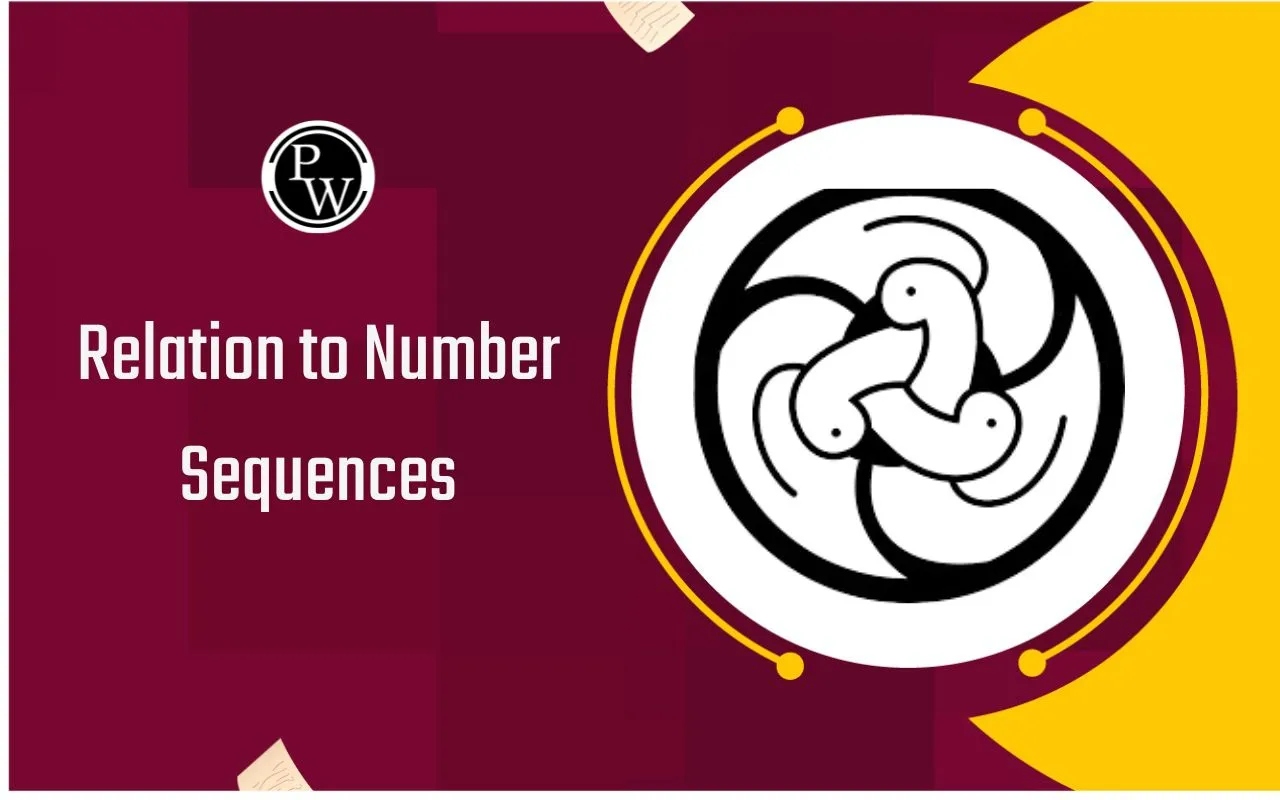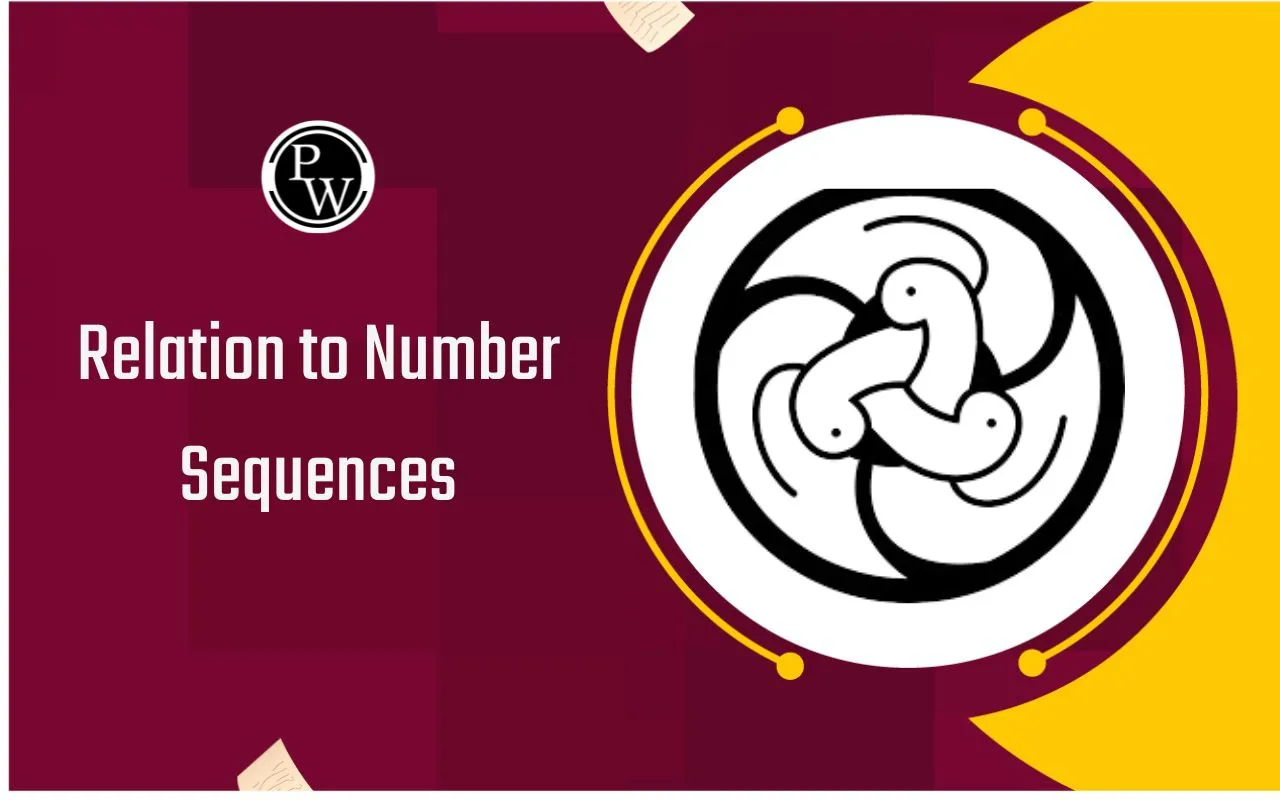
Relation to Number sequences are lists of numbers that follow a specific rule or pattern. Each number in the sequence is called a term. By checking how the numbers change from one term to the next, we can find the rule of the sequence.
The number rule may involve adding, subtracting, multiplying, dividing, or using a mix of operations.
Understanding number sequences helps us predict the next numbers and identify missing terms. In class 6, it also builds logical thinking and problem-solving skills in the child. Common examples of number sequences include counting numbers, even and odd numbers, square numbers, and patterns found in daily life, like calendar dates or house numbers.
What are Relation to Number Sequences in Class 6 Maths?
In the Class 6 maths syllabus, students learn about number sequences and the relation between their terms. Basically, children will study rules like addition, subtraction, multiplication, and division. This Number sequence topic also appears in the class 6th exam pattern, helping students identify patterns, find missing numbers, and improve logical and problem-solving skills.
-
A number sequence is a list of numbers arranged in a special order.
-
Each number in the sequence is called a term.
-
There is always a rule or pattern that connects one term to the next.
-
This rule is known as the relation of the number sequence.
-
Understanding sequences improves the logical and critical thinking of the child in mathematics.
-
Sequences appear in real life, such as calendar dates, house numbers, skip counting, and patterns.
-
These number patterns form the basis of higher mathematics like algebra.
Types of Number Sequence Patterns (Addition, Subtraction, Multiplication, Division)
The relation between number sequences can be as follows. Students first need to identify the type of pattern in the question:
-
Addition pattern (e.g., +3 each time → 5, 8, 11, 14,…)
-
Subtraction pattern (e.g., –2 each time → 20, 18, 16, 14,…)
-
Multiplication pattern (e.g., ×2 each time → 2, 4, 8, 16,…)
-
Division pattern (e.g., ÷2 each time → 40, 20, 10, 5,…)
Sometimes, mixed operations are used (e.g., +1, +2, +3,…).
Finding the rule of the number sequence helps us to:
-
Continue the sequence of numbers
-
Fill in the missing numbers or gaps
-
Check whether a number belongs to that sequence or not
Relation to Number Sequences for Class 6 Maths
In the Class 6 maths syllabus, the topic “Relation to Number Sequences” helps students understand how numbers follow a pattern or rule. These number rules may include addition, subtraction, multiplication, or division between terms.
This topic (Relation to Numbers) also forms an important part of the class 6 exam pattern, improving students’ logical thinking and problem-solving skills. By learning how to find the rule in a sequence, students can identify missing numbers and continue the pattern correctly. The video link below can further help students understand this concept better.
Examples of Common Number Sequences for Class 6
In the Class 6 syllabus, students learn different types of number sequences, such as addition, subtraction, multiplication, and division patterns. These examples help in understanding the relation between terms and completing sequences correctly in exams. Check the detailed solved examples given below to learn and practice this topic better.
1. Addition Pattern
Sequence: 5, 10, 15, 20, 25, ___
Rule: Add 5 each time
Next Term: 25 + 5 = 30
Answer: 5, 10, 15, 20, 25, 30
2. Subtraction Pattern
Sequence: 50, 45, 40, 35, ___
Rule: Subtract 5 each time
Next Term: 35 – 5 = 30
Answer: 50, 45, 40, 35, 30
3. Multiplication Pattern
Sequence: 2, 4, 8, 16, ___
Rule: Multiply by 2 each time
Next Term: 16 × 2 = 32
Answer: 2, 4, 8, 16, 32
4. Division Pattern
Sequence: 48, 24, 12, 6, ___
Rule: Divide by 2 each time
Next Term: 6 ÷ 2 = 3
Answer: 48, 24, 12, 6, 3
5. Mixed Pattern (Alternating Operations)
Sequence: 3, 6, 5, 10, 9, ___
Rule: Add 3, subtract 1, add 5, subtract 1 (repeating)
Next: 9 + 5 = 14
Answer: 3, 6, 5, 10, 9, 14
6. Even Number Sequence (Numbers which are divisible by 2)
Sequence: 2, 4, 6, 8, ___
Rule: Add 2 each time
Answer: 10
7. Odd Number Sequence (Numbers which are not divisible by 2)
Sequence: 1, 3, 5, 7, ___
Rule: Add 2 each time
Answer: 9
Tips to Solve Relation to Number Sequences Questions
To solve Relation to Number Sequences questions in Class 6, always check how numbers change to find the rule. This helps in class 6 exams, syllabus learning, and practice questions. These tips are useful for completing sequences and scoring well. Check the detailed tips given below:
-
Check the Class 6 Maths Pattern carefully
Look at how numbers change from one term to the next. This helps match the rule given in the Class 6 syllabus and exam pattern. -
Find the difference between terms or Numbers
Subtract or add numbers to see if the sequence follows a constant rule or not. This is very common in class 6 sample papers and practice questions. -
Try multiplication or division patterns
If numbers increase or decrease quickly, the relation might be ×2, ×3, ÷2, etc., which students often see in exam pattern questions. -
Check for mixed or alternating operations
Some sequences use more than one rule (e.g., +3, –1, +3, –1). These appear frequently in Class 6 maths practice tests. -
Fill missing numbers using the rule
Once you identify the pattern, continue the sequence to find missing terms — a scoring question in exams. -
Write the rule clearly in the answer
This helps get full marks in school worksheets, sample papers, and exams. -
Practice regularly
Solving more Class 6 Maths practice questions improves speed and confidence for the annual exam. -
Use real-life patterns
Skip counting, date numbers, and number charts make sequences easier to understand.

